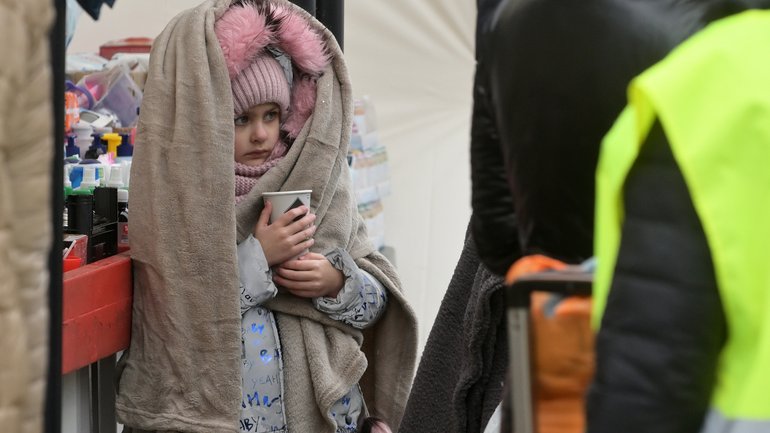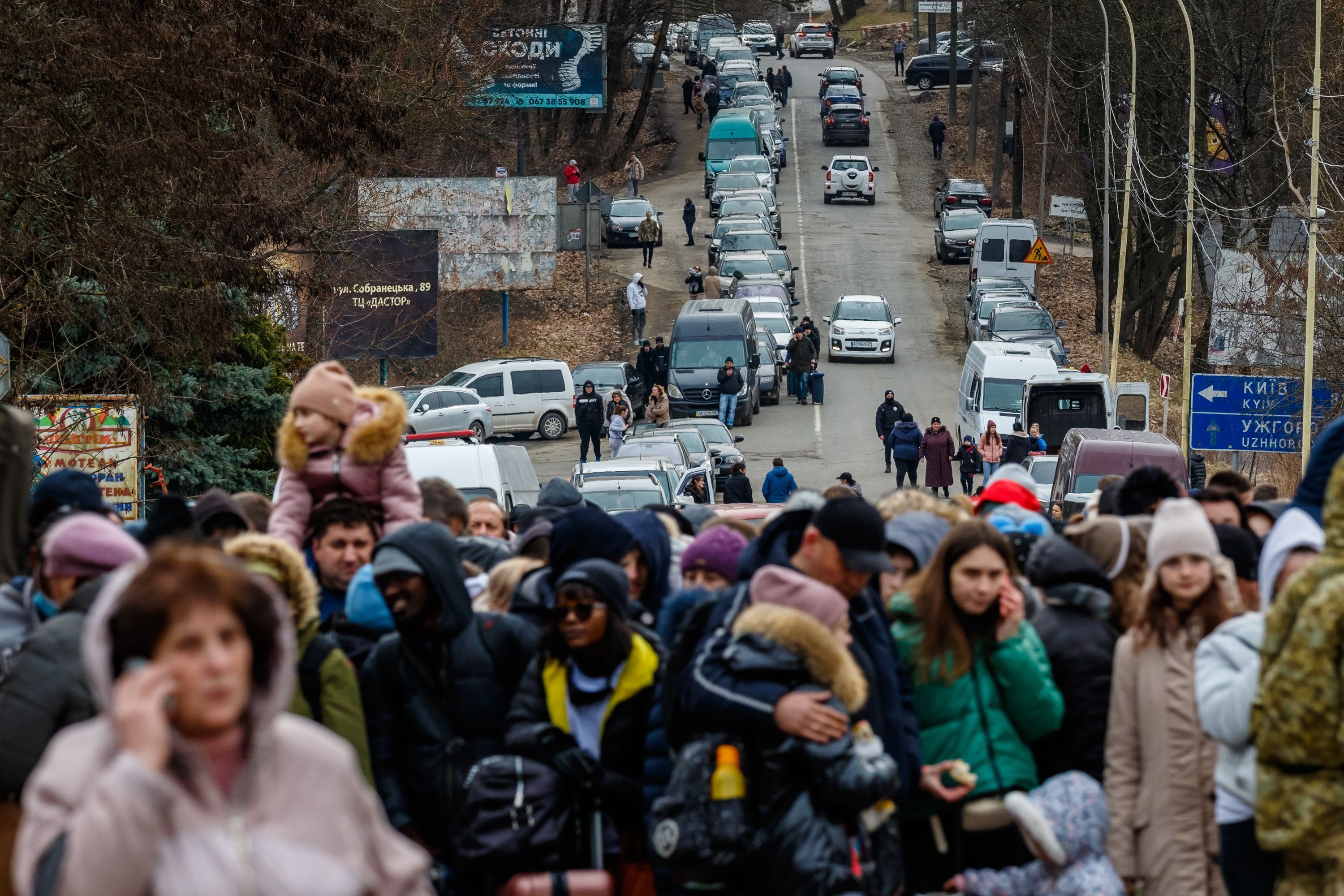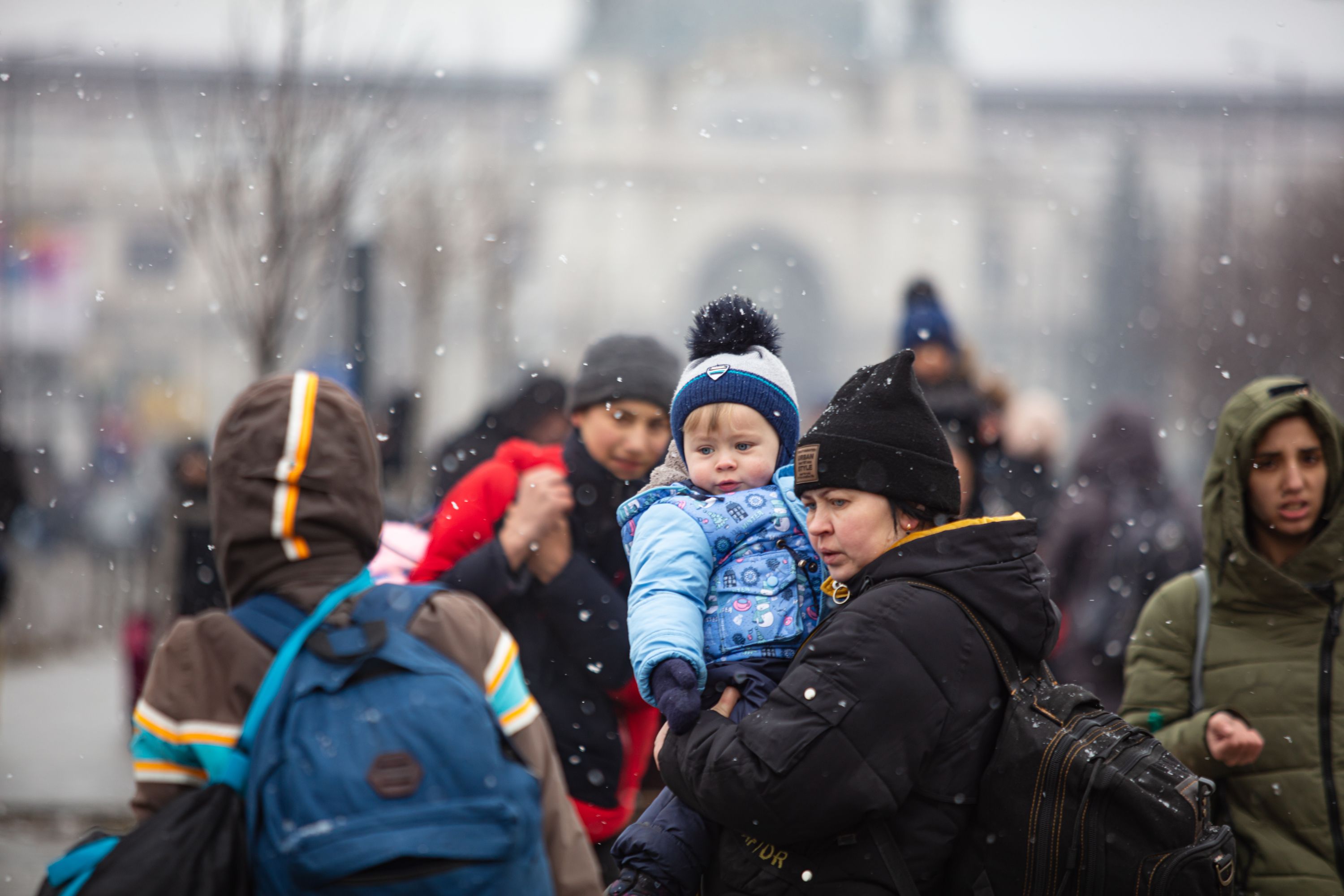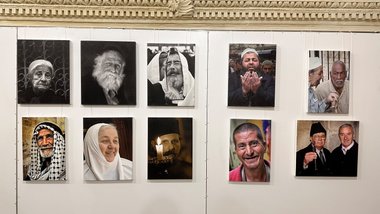‘I have never seen such fear’ - Ukraine’s refugees, and the Catholics helping them survive

Tetiana Kachalenko was at home in Borodianka, outside Kyiv, when Russian shells started falling last month across Ukraine.
“When this damn war started, I was at home,” she told The Pillar.
“All Russian military equipment passed through our Borodianka. They surrounded our Borodianka. They fired there. They shelled our houses. They bombed high-rises, and they shot people.”
Kachalenko, 64, spent five days in the basement of her house, where she was warmed only by three of her cats and a dog.
During a brief lull in the bombings, she fled the house and, with help, reached an evacuation point, from which she was evacuated to a village in the Ivano-Frankivsk region, in the west of Ukraine, farther from the Russian attacks.
Kachalenko — a survivor, now homeless and facing an uncertain future — is not alone. In the month since Russia’s renewed invasion of Ukraine began, millions of Ukrainians have fled their homes and their country, many of them children. And as the humanitarian crisis worsens, Catholic aid groups in Ukraine are doing what they can — and learning new skills — to make sure people fleeing their homes have something to eat, the medicine they need, and, fleeing a war zone, someone to talk with.
More than 10 million Ukrainians have been forced to flee their homes since Russia renewed its Ukrainian invasion Feb. 24.
Nearly 7 million are internally displaced, remaining in the country, but far from home, according to the United Nations’ refugee commissioner.
Another 3.5 million people have left Ukraine as refugees. According to UNICEF, about half of them are children.
Some 2.2 million more Ukrainians have said in polling they are thinking about leaving their homes. But not everyone can. Because of the destruction of roads and bridges in some regions of Ukraine and constant shelling, movement is complex.
The war has radically changed the lives of all Ukrainians. But nearly a quarter of the country’s population of 44 million have already left their homes, representing the most significant migration and humanitarian crisis in Europe since World War II.
According to the latest figures, about half of Ukrainian families have been separated because of the war. Women and children have often moved to safer places or other European countries, while men and elderly people remained.
One such family is that of Anton, 31, from the Havrylivka village near Kyiv. His wife, two children, and sister managed to escape to Italy while he remained in Ukraine.
Telling his story to The Pillar, Anton recalled in vivid detail his family’s escape from their besieged and destroyed village. He remembers the broken cars they saw as they drove away, with dead bodies strewn along the road.

“We sat in a damp basement for 14 days. My parents, wife, sister, seven-year-old son, and eight-month-old daughter. Only at night did we go outside to cook for ourselves on the open fire. When we no longer had the strength, I dared to move my family away. My parents also left a little later,” Anton said.
Before the war, Anton worked at the airfield in Gostomel, where the world's largest aircraft "Mriya" was based - and saw with his own eyes how the first Russian missiles hit the buildings near the airfield. Today he is a volunteer on the western end of the country, helping other refugees.
Of course, the refugee crisis in Ukraine didn’t begin on Feb. 24, 2022. It’s years in the making: Since 2014, when Russia annexed Crimea and launched a proxy war in the Donbas, about 1.5 million Ukrainians had become internally displaced. Some of those people are now forced to seek refuge again, in safer regions of the country or abroad.
Odarka Bordun, communication and fundraising manager at Caritas Ukraine, told The Pillar that the number of refugees and displaced Ukrainians are only approximations. The real scale of the Ukrainian humanitarian crisis will be known only in time, she explained.
“It is complicated to understand the real scale of the crisis, as many people have moved in with their relatives and friends. Only those who asked for help because they had no other support have been registered,” Bordun said.
Caritas is an international confederation of Catholic relief, development, and aid agencies, which has been providing relief services across Ukraine since the war began.
But Bordun told The Pillar that while her agency had made preparations, no one could be sufficiently ready to provide aid during a massive invasion and the needs associated with it.
Of Caritas Ukraine’s 30 branches, three, in the hottest spots of warfare in the east of the country, have been evacuated in recent weeks.
And the work of Caritas aid projects in western Ukraine is constantly complicated by air alarms and forced breaks, Bordun explained. But local leaders have taken initiative to get help to the people who need it.
“During the second week of the war, we managed to establish a system of communication and logistics,” Bordun told The Pillar.
“An essential role in this process was played by local units, which reacted quickly and did not wait for instructions from above,” she said.
Fr. Serhii Tryfiak is director of a Caritas branch office in the western Ukrainian city of Kolomyia.
The priest told The Pillar that he consulted with colleagues from the eastern branches of Caritas who have been working in conflict environments for eight years, to learn from their experiences.
With needs for assistance rapidly escalating, he said, volunteers have stepped up to help fill in the gaps in personnel.
“In peacetime, we have 70 people; now we have more than 300 volunteers who help us. They sort and distribute aid and food to thousands of people who come to our city and those we helped before the war. We provide food to more than 400 people every day and provide psychological and legal assistance,” he said.
The assistance provided by Caritas Kolomyia is not limited only to its immediate region.
Kolomyia is one of the small towns relatively close to the EU border, through which aid is also sent daily to the east and north of Ukraine, which is currently facing some of the harshest conditions in the country.

To get help to people who need it, some Ukrainians are learning new skills on the fly.
Fr. Oleksandr Selezinka, a parish priest in a village near Kolomyia, was forced to become a logistics manager in a few days.
He now organizes and delivers humanitarian goods from all over Europe to cities in Ukraine’s east and north, where people are deprived of basic necessities for daily living.
“It all started with small loads in the first days of the war, but then big trucks also arrived. We don't have large warehouses, so we have to quickly distribute everything and send it by rail or cars to the east,” he told The Pillar.
Sister Magdalena Vytvytska, OSBM, deputy head of the Patriarchal Commission on Monastic Affairs of the Ukrainian Greek Catholic Church (UGCC), told The Pillar that monasteries in the country have provided temporary shelter to families fleeing Ukraine.
Vytvytska said that in the first weeks of the war, when vast queues of refugees formed on the border with Poland, many were able to rest and regain some strength in monasteries located in the border regions.
Virtually all monasteries in western Ukraine opened their doors to refugees and displaced persons, she said.
“Many of our sisters are now volunteering. They prepare food for those in need and our soldiers. Some sisters that weaved prayer beads are now weaving camouflage nets. Some congregations evacuate people with disabilities. They transport these people from the east and then through the green corridor to the west,” said Vytvytska.
But Vytvytska added that sisters have been forced to evacuate from the hotspots of the conflict, especially after convents in the Donbas have experienced violence from Russian soldiers since 2014.
But all male monasteries and congregations continue to serve, even in cities currently under temporary Russian occupation, Vytvytska said.
Jesuit Refugee Service, which has been operating in Lviv since 2008, has been receiving people arriving from the war zone since the first day of the Russian invasion.
Fr. Oleksii Bredeliev, provincial superior of the Society of Jesus in Ukraine, told The Pillar that there have consistently been up to 30 people in the order’s refugee home. Half of them are children, and many of them keep moving, he explained.
“Usually, they go further to the west. Here we provide them with first aid: medicines, food, hygiene products, and psychological support,” he said.
People fleeing the war have experienced deep and severe trauma, explained Iryna Turianska, deputy director of a small Caritas office in Kolomyia, which provided shelter to 300 refugees during the first weeks of the war.
“I have never seen such fear in people's eyes,” Turianska told The Pillar. “When the first refugees from Izium in eastern Ukraine came to us, they were afraid to enter the building. They could not even say a word and immediately began to cry. They were afraid of everything; they expected danger from every side.”
Turianska estimates that 80% of refugees who arrived in Kolomyia are trying to leave Ukraine. But some remain because they don’t have the ability or strength to go further, she said.
Many refugees have said in recent week that they want to return to their own homes but are unsure whether and when to return.
Vadym Maznychenko, 64, is a Chernobyl disaster survivor, who lived in the village of Gorenka near Kyiv when the war started.
He told The Pillar that he is not sure if his house had survived.
“I know that some villages are no longer there at all. Even at a summer children's camp near us, the Russians dropped two air bombs… A bomb fragment killed my friend right in his backyard. Apparently, he still lies there. Who will bury him?”
But despite the horror experienced by the Ukrainians, many say they are doing their best not to lose hope.
“People come to us in despair,” said Turianska, the deputy director of the Caritas office in Kolomyia.
“But they do not give up, they have hope in their eyes, and it gives us strength here. This situation is a test of trust in God for me - can I live with Him every day, even in such conditions?”










